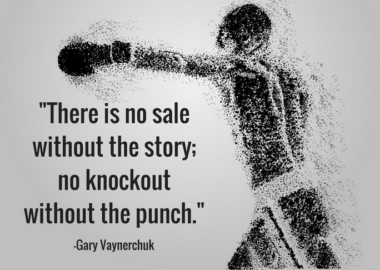Content marketing is hot these days. Companies are embracing blogs, videos and books to tell their stories to the world. However, in tough economic times, the potential for these tools is often dismissed in favor of seemingly more concrete results (this coupon netted a 13% increase in sales, ergo more coupons, less talk-y blog posts, please).
So why content marketing? Marketers live in a time of exploding data, and many assiduously track their metrics in hopes of unlocking more information about potential customers. (This is not new by the way. I was talking to a former P&G brand manager who said that her job was to be more interested in how people washed their hair than any reasonable person should – but now, she’d have to know how often they Facebooked about it.)
That is the frustrating part about content marketing – it’s easy to count page views, but hard to translate that into share of wallet. You can see how many people read your ideas, but talk is cheap. But here’s the thing – coupons don’t do what ideas do. Coupons say you can save fifty cents on breakfast cereal, but once those pennies have been saved, all you’ve taught your purchaser is that your product is worth less than you initially said it was worth (and the store-brand cereal is still cheaper).
Now, I’m not actually here to knock getting a good deal, or disparage the fine art of pricing to sell. I am here to point out that content creates demand by itself. By being more than a product, you can create desire for your product by not only solving problems, but by inspiring people by telling your story, and listening to their story. The only way to ensure brand loyalty in a highly fragmented marketplace is to gain a share of hearts. Content can ensure that a potential customer thinks about your brand on the way to work, over Saturday morning coffee and when they are emailing their grandmas.
The next step, of course, is to have actionable content marketing. Often brands make the mistake that if you feed the content beast, naturally you’ll find your audience. Content that inspires sales is actionable, shareable and human. These criteria are not metrics, because you are not trying to train consumers as much as build community.
Give people something to do. If you sell tuna, give them your best possible tuna casserole recipe. If you have an outdoor pool cleaning company, work out an in-depth guide to winterizing (and spring cleaning) their pool. If you’re a custom book publisher, let them know how to ask the questions that uncover the juiciest stories. Bring your readers content that inspires action (even if that action is just dropping something into Evernote).
Make people look cool by associating with you. You know what I mean; the cringeworthy Facebook post by your old high school buddy that just reeks of corporate groupthink. Viral content has meaning and relevance. It’s not rocket science – just ask if you’d put this on your personal social media in front of your friends and family.
Remember, it’s about trust, not sales: OK, it’s kind of about sales. But remember, you are dealing with an unbelievably savvy consumer base (who might have more Twitter followers than you). Don’t include a ham-fisted sales pitch halfway through your blog post. Treat others how you’d like to be treated. Be reliable. Be real.





